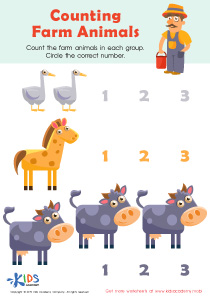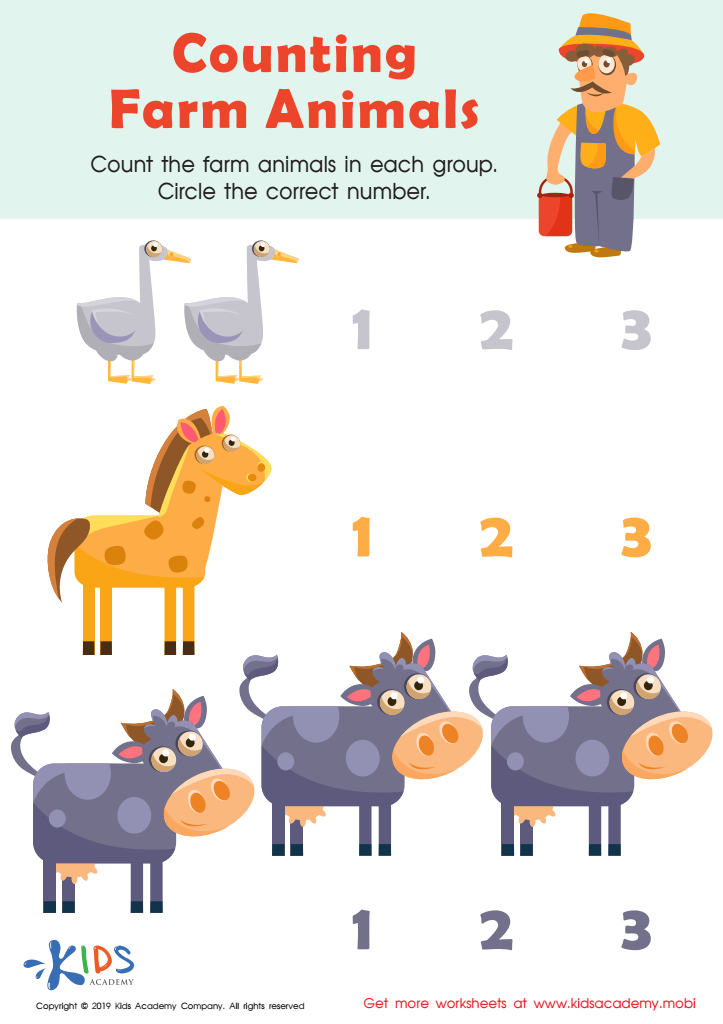Farmers - Lesson for Preschool, Chapter - Community Helpers
In the "Farmers" lesson, part of the "World Around Us" unit within the "Community Helpers" chapter, preschool students embark on an engaging journey to understand the pivotal role farmers play in our communities. Through the timeless song "Old MacDonald Had a Farm," children will learn about different farm animals, the sounds they make, and get a glimpse into the diverse tasks of a farmer. This auditory and visual engagement not only enhances their language skills but also fosters an early appreciation for music and rhythm.
Additionally, the "Counting Farm Animals Worksheet" activity will introduce basic math concepts by having students count various animals found on a farm. This not only reinforces their counting skills but also encourages attention to detail and cognitive development in recognizing and differentiating between animal types.
Understanding the role of farmers is crucial as it lays the foundation for children to appreciate the hard work that goes into food production and animal care. It teaches them the importance of community helpers and instills respect for those who contribute to our daily lives in often overlooked ways. Moreover, integrating math and music into the lesson makes learning about farmers an enjoyable and multidimensional experience.


-
Activity 1 / Old MacDonald Had a Farm
-
Activity 2 / Counting Farm Animals Worksheet
What's the favorite place of young children everywhere? Why, the farm, of course! That's why this free farm animals counting worksheet is the perfect way to help build number sense and counting skills for your young mathematician! They'll use the fun pictures as a one-to-one representation for counting, and then they'll circle the correct corresponding number to match each picture. It's a meaningful way to help give them counting practice in a fun way.

